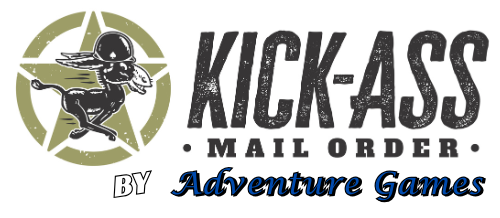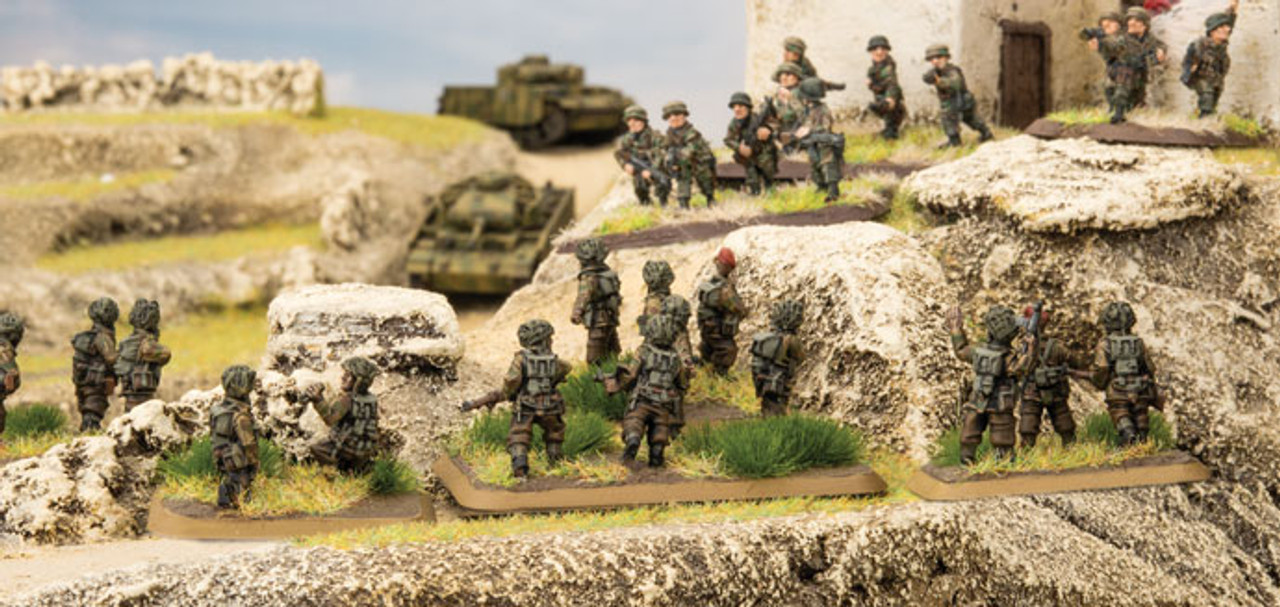Product Description
Includes a 16pg booklet, Unit Cards and Command Cards. Everything you need to use your existing Para or Commando Force in Mid War..
What's In The Book?
Red Devils contains background on the British 1st Airborne Division covering their origins, and campaigns in 1942 and 1943. Inside you will also find background on the Commandos and their actions in the middle years of the war.
An expanded Eighth Army Force Diagram can also be found in Red Devils. This allows you to field a Parachute Company and Commando Troops alongside the Formations found in Armoured Fist. Airborne support units have also been included in the Force diagram, allowing you to take additional support options like 75mm Airlanding Batteries, an Airlanding 6 pdr Anti-tank Platoon, and an Airlanding Recce Platoon.
The special rules section covers the unique rules of both the Red Devil paras and the Commandos.
You can field either a Parachute Company, or a Commando Troop from Red Devils.
The pack includes:
- John Frost (Parachute Company Warrior)
- Richard Geoffrey Pine-Coffin (Parachute Company Warrior)
- Peter Young (Commondo Troop Warrior)
- Lord Lovat Simon Fraser (Commando Troop Warrior)
- No. 6 Commando at Bone (Parachute Company, Commando Troop)
- Salvaged Naval AA Guns (Parachute Company, Commando Troop)
- Cornfield Stop Bullets (Command Section)
- Gammon Bombs (Parachute Platoon)
British Airborne Forces 1942-43
History by Jeff Key, additional history and organisation information by Andy Parkes, donkey work by Wayne Turner.
The maroon beret of the British airborne forces was first seen by German troops in North Africa and within months they had christened the ferocious Paras as Rote Teufel - Red Devils.
This distinctive head dress was officially introduced in 1942, at the direction of General Browning, and the Pegasus symbol - Bellerophon astride winged Pegasus - became the emblem of British Airborne Forces. The maroon beret has since been adopted by parachute troops all over the world.
In 1940, when Britain faced invasion, Winston Churchill, sought the means to strike back at the enemy. One example was his memo of 22 June, instructing the War Office ‘ - we ought to have a corps of at least 5,000 parachute troops.’ and it is from this date that British airborne forces start their history. Despite a lack of experience and equipment, a small band of resourceful men began at once to create this new force. Events moved fast; the Central Landing School was set up at Ringway, Manchester, by Army and RAF staff: men of No. 2 Commando were selected for training, and the first jumps carried out on 13 July. In September the first Hotspur gliders were ordered.
By the end of 1940, No. 2 Commando, now 500 strong with a parachute and a glider wing, was renamed 11th Special Air Service Battalion. In February 1941, only nine months after formation, the first airborne operation took place, when 38 men parachuted into Southern Italy to destroy the Tragino Aquaduct.
After these tentative trials, 1941 was a year of development and expansion. The 1st Parachute Brigade was formed in September, and shortly afterwards, an infantry brigade became the 1st Airlanding Brigade, with four airlanding battalions and supporting arms and services, started training with the gliders now coming off the production line. In India the 50th Indian Parachute Brigade was formed. Major General F. A. M. Browning was appointed Commander Paratroops and Airborne Troops. From his small HQ, the 1st Airborne Division was formed in November. In December, the Glider Pilot Regiment was established, as part of the Army Air Corps, to fly the gliders: initially Hotspurs and Wacos, then Horsas and Hamilcars. The officer and sergeant pilots, all trained soldiers, fought many gallant actions along side the airborne troops they had landed. Later in August 1942, all parachute battalions became battalions of The Parachute Regiment in this new corps.
















